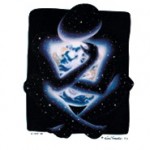Curl Murder: “How Could You Do That to Your Hair?”


 My mother’s desire to be an accepting individual doesn’t mean she’s going to hold her tongue when she has an opinion. In fact, I guess we’re a lot alike that way.
My mother’s desire to be an accepting individual doesn’t mean she’s going to hold her tongue when she has an opinion. In fact, I guess we’re a lot alike that way.
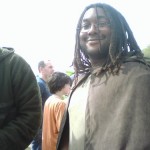 Even so, I found it ironic that, in the fifteen or more years that I’ve been carrying dreadlocks, she’s often commented on the many nonlocked ways she likes my hair, and how those more socially acceptable ways show off my abundant curls. I find this ironic because she spent my entire childhood trying to comb out said curls, cut them into a bob, or at least train them into little wetted spirals held overnight with bobbie pins, making different curls than the ones that naturally sprout from my scalp.
Even so, I found it ironic that, in the fifteen or more years that I’ve been carrying dreadlocks, she’s often commented on the many nonlocked ways she likes my hair, and how those more socially acceptable ways show off my abundant curls. I find this ironic because she spent my entire childhood trying to comb out said curls, cut them into a bob, or at least train them into little wetted spirals held overnight with bobbie pins, making different curls than the ones that naturally sprout from my scalp.
 I got off easy in the girl-child-of-the-seventies-hair-torture department. My older sister had to sleep in juice can curlers. They weren’t just the size of juice cans, they were actual juice cans with her long, straight hair wrapped around them. My younger sister, also cursed with straight hair, but tender-headed, was subjected to the curling iron.
I got off easy in the girl-child-of-the-seventies-hair-torture department. My older sister had to sleep in juice can curlers. They weren’t just the size of juice cans, they were actual juice cans with her long, straight hair wrapped around them. My younger sister, also cursed with straight hair, but tender-headed, was subjected to the curling iron.
My straight-haired mom went for perms every three months. The perm process took hours. The chemical smell  burned our eyes and left actual burns on the scalp as it burned her hair into whatever curl she wanted. Sometimes she’d dye the gray away, or go for streaks or highlights.
burned our eyes and left actual burns on the scalp as it burned her hair into whatever curl she wanted. Sometimes she’d dye the gray away, or go for streaks or highlights.
Given what mainstream folks do to their hair regularly, I’m perplexed at the occasional weird reaction to a gentle hair practice that involves no chemicals and is rooted in community, familial interaction and connection to nature. But I realize we’re all coming from culture and what’s familiar.
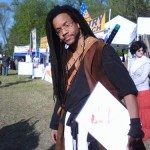 The other undercurrent of comments from my White friends and family is some good old fashioned curl coveting. If I’m not going to use them, someone else should have them, right?
The other undercurrent of comments from my White friends and family is some good old fashioned curl coveting. If I’m not going to use them, someone else should have them, right?
I’m pensive about the zenophobia that seems to frame the rare brave comment. I was in an elevator in a library in Lexington, Kentucky. A woman asked me about my locks. “They’re different,” She concluded. “To you,” I answered. She thought for a moment. “No, they’re different,” she 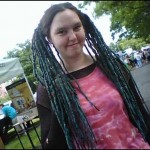 repeated. Her world was the entire world.
repeated. Her world was the entire world.
Although such comments are rare, some folks at the York Fair in Pennsylvania really laid it on thick. “You don’t belong here. What country are you from?” My home of nearly twenty years was just twenty minutes from where I was standing, in the country where I’ve lived every day of my life, except for that summer in Spain when I was fifteen and that day my family drove into Canada while visiting Michigan.
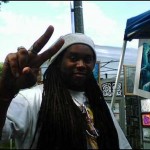 As a matter of fact, a few miles from the York Fair at Spoutwood Farm, I used to attend the annual Faerie Festival. That crowd, sometimes reaching ten thousand in a weekend, was the place where I was least different, surrounded by a high percentage of dreadlocked hippie folk.
As a matter of fact, a few miles from the York Fair at Spoutwood Farm, I used to attend the annual Faerie Festival. That crowd, sometimes reaching ten thousand in a weekend, was the place where I was least different, surrounded by a high percentage of dreadlocked hippie folk.
After the first few years of carrying locks, I was long past concerning myself with the store security guard who followed me around or the eyes that might do 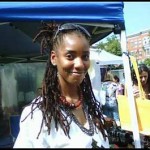 double takes when I entered a room. I was busy living my life. If people did have stereotypes, as soon as I would speak, it was clear that I was not stoned and that I had come to conduct serious business. I was never aware of my hair closing any doors that I wanted to enter.
double takes when I entered a room. I was busy living my life. If people did have stereotypes, as soon as I would speak, it was clear that I was not stoned and that I had come to conduct serious business. I was never aware of my hair closing any doors that I wanted to enter.
But when I began spending time with my partner, C.T., he had an interesting vantage point, walking into a restaurant after me, or watching me in a parking lot. He would see every double take that I was missing because I  was just being myself, and didn’t care. He made a game out of projecting what each onlooker was thinking. It reminded me that with every point of contact, I was adjusting each person’s normal/different continuum.
was just being myself, and didn’t care. He made a game out of projecting what each onlooker was thinking. It reminded me that with every point of contact, I was adjusting each person’s normal/different continuum.
I like the tradition of working (maintaining) locks as a familial or communal practice. When I started my first set, I threw a party and asked my Heathcote Community mates to start them. I got some feedback that this felt odd or self absorbed. So I established the next set  myself. I did teach C.T. to maintain my locks and when they grew so long and heavy that I was having neck pain, he ritually cut them for me, symbolizing also, the end of our time with Occupy Wall Street. Now he’s helping me start a new set.
myself. I did teach C.T. to maintain my locks and when they grew so long and heavy that I was having neck pain, he ritually cut them for me, symbolizing also, the end of our time with Occupy Wall Street. Now he’s helping me start a new set.
This is the set of locks I’ll carry as I go gray, as C.T. and I go deeper in our relationship and our teaching of consensus. What new places and people will add their energy to these locks? Our dog will grow old and die. Will we  make it to California? Where will we put down roots and establish our consensus institute?
make it to California? Where will we put down roots and establish our consensus institute?
In this time of new beginnings, it is time to begin new dreadlocks.
—WT
Subscribe to this blog's RSS feed
How I Know There Are Sixty Drawers in My House
 Drawers really add up. You look at a dresser and it has four drawers. You don’t think to do a room to room survey to find out how dressers and filing cabinets and desks and sideboards collaborate with the kitchen to really run up your drawer tally. You don’t go room to room, because, why would you?
Drawers really add up. You look at a dresser and it has four drawers. You don’t think to do a room to room survey to find out how dressers and filing cabinets and desks and sideboards collaborate with the kitchen to really run up your drawer tally. You don’t go room to room, because, why would you?
Neither did I.
Then came today, when my partner and I had been out running errands with our dog, who loves being “on the away team.” When we got to our door and it opened without a key, we could plainly see we’d been burglarized.
 The predominant visual was that every drawer was pulled out, some tossed on the floor, contents scattered.
The predominant visual was that every drawer was pulled out, some tossed on the floor, contents scattered.
Yes, we called 911 and followed instructions to leave the house and sit in our locked car until the police came. Three officers in three separate patrol cars arrived and blocked off our cul-de-sac. They circled the outside, then surveyed inside, guns drawn. They gave us the all clear and had us survey for missing items. We tried and tried, but we couldn’t come up with a single item that was missing.
Our possessions were so lame the police didn’t even give the complimentary lecture on how to make our home more secure. If I made enough to pay taxes, I might feel ripped off. I thought they always gave the lecture.
Now that I’ve given you the down and dirty on the deed, back to the interesting stuff about drawers. Room by room, I followed in the footsteps of my burglar, imagining what he or she thought while pulling out every single drawer in our file room.
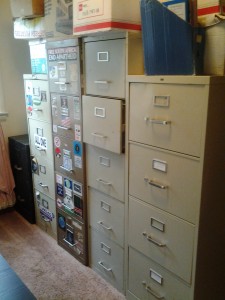 Yes, in the drawer tally I have an unfair advantage because we have a file room. I have drawers and drawers of my writings, and C.T. has saved statistics and other information on every Food Not Bombs feeding, activist event, theatrical production, and consensus workshop he held—I mean feeding head counts, menus, promotional fliers, etc., and date books going back to 1983. We’ve been moving his archives from house to house, planning to write his memoirs.
Yes, in the drawer tally I have an unfair advantage because we have a file room. I have drawers and drawers of my writings, and C.T. has saved statistics and other information on every Food Not Bombs feeding, activist event, theatrical production, and consensus workshop he held—I mean feeding head counts, menus, promotional fliers, etc., and date books going back to 1983. We’ve been moving his archives from house to house, planning to write his memoirs.
What did our burglar think, opening a file drawer to find dog costumes, or pulling out my middle desk drawer to find little gemstone dinosaurs? Well, I like to think that I’m unique, interesting, even thought provoking. But this burglar was probably not moved. Nothing in these actions was about me.
Our neighbors were a flurry with updates and advice in the hours after our break in. It turns out a house in the opposite cul 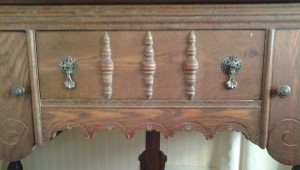 de sac was also broken into around the same time, and again, nothing taken. People theorized what the burglars might have been looking for—cash, illegal drugs, prescription drugs (oxy-anything), small electronics. Was it a gang initiation or training exercise?
de sac was also broken into around the same time, and again, nothing taken. People theorized what the burglars might have been looking for—cash, illegal drugs, prescription drugs (oxy-anything), small electronics. Was it a gang initiation or training exercise?
We will almost certainly never know. And as our friend Ross, who owns the house, was here fixing the broken front door, I marveled that I really was not very upset. Acknowledging that events could have gone very badly, up to and including death, this was a mild event, a warning to be careful.
 What struck me? Apart from reflecting that the event could have gone down in many different ways and those I care about might have been hurt (read: dog), I have fixated on the realization that, without the task of going from room to room closing drawers, I might never have noticed that there are sixty drawers in this house. What does it mean? It feels like just a poetic little factoid, maybe a message to scale down my possessions further, maybe a cute, meaningless parallel in the year that C.T. is turning sixty years old. Maybe I am just pondering myself, hurling through 2013 in this little house on spaceship Earth, clinging to all the drawerspace I can maintain.
What struck me? Apart from reflecting that the event could have gone down in many different ways and those I care about might have been hurt (read: dog), I have fixated on the realization that, without the task of going from room to room closing drawers, I might never have noticed that there are sixty drawers in this house. What does it mean? It feels like just a poetic little factoid, maybe a message to scale down my possessions further, maybe a cute, meaningless parallel in the year that C.T. is turning sixty years old. Maybe I am just pondering myself, hurling through 2013 in this little house on spaceship Earth, clinging to all the drawerspace I can maintain.
What am I storing? Clearly nothing a burglar wants.
FREDERICK, MARYLAND POW-WOW SCHEDULED FOR May 2011: Frederick Food Bank TO Benefit From Pow-Wow
Forwarding a press release.—WT:
Hollister, NC- Pow-Wow, an American Indian owned and operated company, will sponsor the Frederick, Maryland American Indian Pow-Wow and Show at the E-Eventplex at the Frederick Fairgrounds (797 E. Patrick Street Frederick, MD 21705) on May 21-22, 2011. The Pow-Wow is an opportunity for the public to interact with American Indian dancers, singers, drummers, artists and craftspersons. This event is an attempt by Pow-Wow to educate the public about American Indians, past and present, through the arts.
The pow-wow is an opportunity for the public to interact with over 100 American Indian dancers in regalia (outfits), singers, drummers, artists, and crafts persons. Over $8,000 will be offered in dance and drum prizes, which will attract more than 100 dancers in full regalia from throughout the United States and Canada. At least Five (5) drums are expected.
On Saturday, gates will open at 11:00AM, and the event will kick off with a parade of nations (grand entry) at 12:00 noon. Over 50 Tribes will be represented at this year’s event, and they include: Haliwa-Saponi, Piscataway, Chickahominy, Rappahannock, Cherokee, Sioux, Iroquois, Lumbee, Hopi, Mattaponi, Nansemond, Choctaw, Navajo, and so many other Tribes and nations.
Hoop Dancer Pete Four Winds (Mohawk) and Juan Salinas of the Aztec Dancers will perform both days.
Fun activities for children include: Storytelling by Rose Powhatan, pony rides, face painting, tipi visit, bow ‘n’arrow shooting and a make it/take it table.
The public will be able to purchase some of the finest Native American crafts available. Items for sale include turquoise jewelry, moccasins, beadwork, rugs, books, paintings and dreamcatchers to name a few. Buffalo stew, fried bread, Indian corn soup and buffalo burgers are just a few of the Native American food items that will be on sale at the event.
Admission to the Pow-Wow is as follows: Friday-$10 for everyone Saturday –Sunday: Ages 3-12: $6:00 Ages 13-up: $10.00. The Frederick Food Bank will benefit from the Frederick Pow-Wow. A donation of a non-perishable food item at the gate on Saturday or Sunday will allow a person/family to receive $1 off each ticket purchased. This offer is not good with any other offer. Please call Ms. Sarah McAleavy, Coordinator of Food and Nutrition at Frederick Food Bank for more info concerning our food drive. Her number is (301) 600-6263.
For more information regarding the pow-wow, please call the show promoter at (252) 586-7913 or (252) 532-0821 or send e-mail to: powwow@vance.net This is not a web-site.
OUR WEB-SITE IS: http://www.myspace.com/powwow4life
TELEVISION AND PHOTO OPPORTUNITES
FREDERICK, MARYLAND AMERICAN INDIAN POW-WOW SCHEDULE-UPDATED
May 21, 2011
11:00AM-Gates Open/Vendor Sales
12 Noon-Grand Entry/Parade of Native American Dancers
1:00PM-Moccasin Blowout-Exhibition
1:00: Storyteller-Rose Powhatan
1:15: Hoop Dancer-Pete Four Winds
1:30-3:00PM-Native American Dancers-Exhibitions-1st round of contests
3:00-3:15: Storyteller-Rose Powhatan
3:15-3:30: Hoop Dancer-Pete Four Winds
3:30PM-4:00PM-Juan Salinas, Aztec Dancer
4:00PM-Moccasin Blowout Competition-1st Round
4:30PM-6:30PM-Native American Dancers/Contests/Exhibitions/Specials/honors-2nd round of contests
7:00PM-Gates Close
May 22, 2011
11:00AM-Gates Open/Vendor Sales
12 Noon-1:30PM-Grand Entry/Parade of Native American Dancers/Exhibitions
1:30PM-1:45PM-Storytelling: Rose Powhatan
1:45PM-2:00PM: Hoop Dancer-Pete Four Winds
2:00-3:30PM-Native American Dancers-Exhibitions-2nd round of contests
3:30PM-Juan Salinas-Aztec Dancer
3:50PM-Moccasin Blowout Competition-2nd Round
4:00PM-6:00PM-Native American Dancers/Contests/Exhibitions/Specials/honors-2nd round of contests
6:00PM-Announcementt of winners
6:00PM-Gates Close
Please join our Hippie Chick Diaries fan page on Facebook!
No Chocolate for the Localvore?
 As I was writing my last post about my favorite chocolate bar, something was eating at me. I wasn’t mentioning a priceless consideration we can make in our buying choices–locally made products! The omission bothered me, as I am both diligent and inconsistent about promoting this idea.
As I was writing my last post about my favorite chocolate bar, something was eating at me. I wasn’t mentioning a priceless consideration we can make in our buying choices–locally made products! The omission bothered me, as I am both diligent and inconsistent about promoting this idea.
I vend at festivals and fairs in my region, promoting fair trade crafts, which I buy from fair trade wholesalers and charities, such as Ten Thousand Villages, Northern Sun, Gypsy Rose and ethical American companies and non-profits such as Karuna Arts, Native Scents and Aurora Glass. Choosing winning products from their catalogs and websites is quite easy, compared to choosing from the river of local artists, hobbyists and craftspeople who ask me to turn their tinkerings into gold. Locals following a creative outlet haven’t always checked the marketplace to decide what they should make. There are lucky guesses–Duct tape wallets are wildly popular!
 But nothing is simple. I make jewelry, so to see me at a festival and buy from me would seem “local.” But my gemstones, findings, etc., come from all over the world, under all conditions imaginable. And I’ll bet the kid who makes the duct tape wallets isn’t holding out for duct tape made locally, from local materials. I imagine my Amish neighbors who do a fine business with outdoor sheds choose the cheapest wood, not the most local.
But nothing is simple. I make jewelry, so to see me at a festival and buy from me would seem “local.” But my gemstones, findings, etc., come from all over the world, under all conditions imaginable. And I’ll bet the kid who makes the duct tape wallets isn’t holding out for duct tape made locally, from local materials. I imagine my Amish neighbors who do a fine business with outdoor sheds choose the cheapest wood, not the most local.
Like my favorite localvore and online mascot the wiselittleraccoon, my partner Iuval is looking for land to found a new intentional community, one in which members participate in a much more local economy, getting by with very little and making most of their basic needs. In this new/old model, most people would participate directly in growing nearly all of their food, including grains.
I know truckloads of gardeners and farmers. Some grow 5-10% of their food. Others grow nearly all the fruits, vegetables, beans and nuts they need. Grain seems to be another story, a final frontier.
With farmers’ markets, backyard and community gardens, CSA’s, etc, buying food locally seems to be comparatively easy, if not cheap. Government subsidies and other factors make commercial foods much cheaper than local organics. I love being right each time I repeat, “You get what you pay for…”
But as filmmaker Annie Leonard points out in The Story of Stuff, the trinkets and plastic crap we seem to think we need leave wakes of environmental and social distruction (slavery, child labor, unsafe working conditions). In my life, learning to live without “stuff” is the first step. This has been easy since I pared down from a four bedroom Victorian to a ten-by-twelve foot stone springhouse and commune life. In that process, I got clear that “stuff” doesn’t make me happy; It doesn’t fill that spiritual empty box. People do; Nature does. A dog is just the greatest. Stuff, not so much.
Now if I decide something is a need, not a want, I have mental flow charts to navigate. Can I get it made of anything except plastic? Made locally, of local materials? Union shop or crafter? Organic? Minimal packaging? Locally owned retailer? Will online shopping save or add to fuel consumption?
As of this writing, chocolate is still listed as a “need,” although I have friends who never partake because cacao can’t be grown in their area. We’re all hiking in different places along the green trail. My backpack still contains chocolate. And a car. And my own detatched cabin I share with only my family. And a cellphone, my mac mini, and the Firefly boxed set…
Shiny!
Soldierhugger
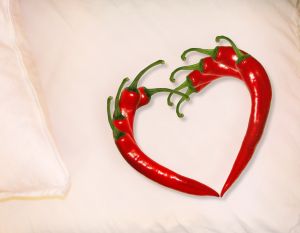 I had a fantastic, intense time at Loving More’s Poly Living 2009 conference in Philadelphia this past weekend. My partner Iuval and I each felt we learned so much about ourselves in the many workshops and in the networking and connections we made with other participants. I’ll be highlighting and profiling some in posts to come.
I had a fantastic, intense time at Loving More’s Poly Living 2009 conference in Philadelphia this past weekend. My partner Iuval and I each felt we learned so much about ourselves in the many workshops and in the networking and connections we made with other participants. I’ll be highlighting and profiling some in posts to come.
I noticed in particular that the people coming to the conference, identifying as polyamorous or exploring it, came from many walks of life. I met a few folks from a military background, for example, very different from my pacifist path.
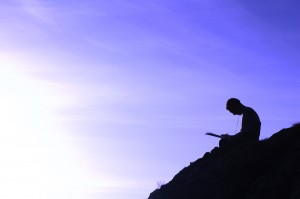 In workshops designed to help us access intimacy so that we could deepen and strengthen the relationships we choose, most differences melted away with ease. I remember one particular man. I might not have ever noticed or given him a second look on the street. He seemed mainstream and businesslike, not a flavor of mine. But someone in an exercise complemented him on his eye gazing; They’d made a tender connection. Later I found myself in a group of three with him and another man. Our instructions were to talk for fifteen minutes on “something you might not know about me.” I spoke about my journey into accepting my bisexuality after living as a lesbian for seventeen years. This man, the great eye gazer, began to speak about his life as a military operative. He spoke of specific operations in the Middle East and Central America. He spoke in a certain level of detail, not as if he were breaching security in some kind of confession, but to paint a picture of pride, pride tinged with regret. He had led a certain successful rescue. He had designed a certain part of a weapon. He had been at this campaign and that one, and he stated the number of dead on both sides. He spoke many languages. He had blended in where he was sent and he had done what he was told. He didn’t say so, but I got the sense that he now doubted the morality of his actions, maybe a little, maybe a lot.
In workshops designed to help us access intimacy so that we could deepen and strengthen the relationships we choose, most differences melted away with ease. I remember one particular man. I might not have ever noticed or given him a second look on the street. He seemed mainstream and businesslike, not a flavor of mine. But someone in an exercise complemented him on his eye gazing; They’d made a tender connection. Later I found myself in a group of three with him and another man. Our instructions were to talk for fifteen minutes on “something you might not know about me.” I spoke about my journey into accepting my bisexuality after living as a lesbian for seventeen years. This man, the great eye gazer, began to speak about his life as a military operative. He spoke of specific operations in the Middle East and Central America. He spoke in a certain level of detail, not as if he were breaching security in some kind of confession, but to paint a picture of pride, pride tinged with regret. He had led a certain successful rescue. He had designed a certain part of a weapon. He had been at this campaign and that one, and he stated the number of dead on both sides. He spoke many languages. He had blended in where he was sent and he had done what he was told. He didn’t say so, but I got the sense that he now doubted the morality of his actions, maybe a little, maybe a lot.
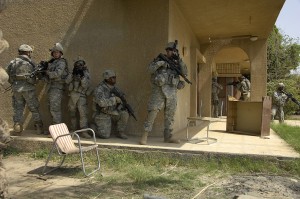 He went on for his fifteen minutes. Clearly his life and identity had been caught up in what he had thought was a good thing….once. “I have been responsible for many deaths. And those dead had families, children, mothers,” He said. After talking, we were instructed to share touch with each person and he and I embraced for several minutes–not something I often imagine doing with a military operative.
He went on for his fifteen minutes. Clearly his life and identity had been caught up in what he had thought was a good thing….once. “I have been responsible for many deaths. And those dead had families, children, mothers,” He said. After talking, we were instructed to share touch with each person and he and I embraced for several minutes–not something I often imagine doing with a military operative.
Later, after the exercise, I had the chance to thank him for his story and to thank him for not following the programming that makes soldiers perceive their enemies as subhuman, as other. “By remembering their humanity, you keep your own,” I told him.
I have to admit to a heavy prejudice against military personnel. Iuval, in envisioning the perfect Intentional Community, often suggests that former soldiers would make good members, because they’re used to hardship and simple living, hard work, doing what needs to be done, and hierarchy. Ironically, Iuval sees the usefulness of hierarchy for getting things done quickly and for taking advantage of differing levels of competence and expertise (within a consensus framework though) for Intentional Community. My Heathcote community-mate Karen is a former Navy officer, booted out under Don’t Ask, Don’t Tell. When she recalls what she liked about her life aboard ship, it was the bonds and community among her crew. So I suppose I need to follow my own advice and humanize soldiers in my mind.
By remembering their humanity, I keep my own…I’m grateful to have met this man in an environment of caring and listening, even if we may have walked away with our different world views intact. Were his stories true? I have no reason to doubt it. They’re someone’s stories, in any case. I have some concern that I might violate his trust by writing about my experience of his life in this post. But it is just that–my experience of pushing my own edge–which is my topic.
Really, it’s a theme in my life and the meaning of “Curio Coast,” my production company. I must like to find my borders and stretch myself. Considering the different challenges Iuval and I put to each other, we must have been drawn together for that purpose! Now I have him to question my assumptions about Intentional Community, sustainability, simple living, relationships, hunting and vegetarianism, consumerism, family…so many aspects of life. He has a talent for rooting out my complacency and the places I hide from the hard issues of our world, just as this soldier challenged me with his nuanced story.
What are the comfort zones we need to abandon to take life on Earth into the future?
